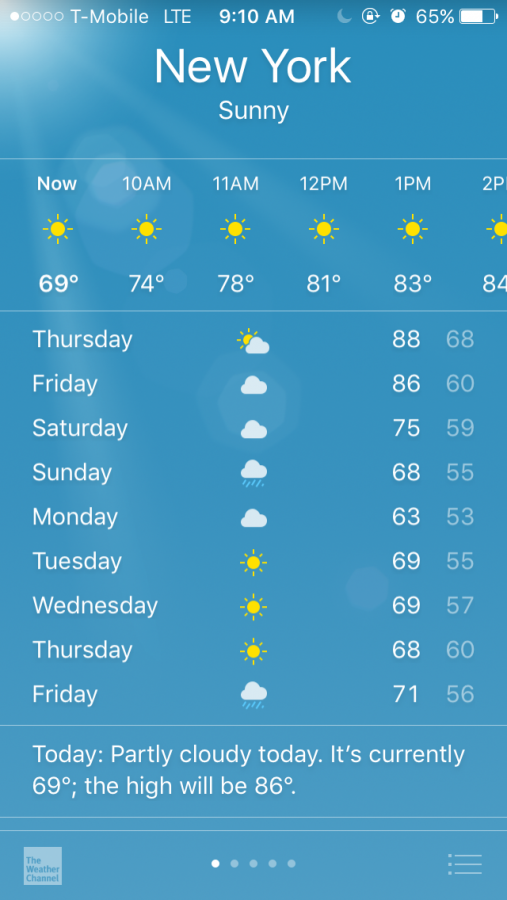What is Climate Change?
The world’s ice caps are melting, species are going extinct, and the weather is unpredictable. Climate change is real. What is it, though?
It is an umbrella term for topics like global warming, shifting rainfall and precipitation patterns. Since the 1880s, the Earth has warmed by 2 degrees Fahrenheit, beginning to melt the world’s land ice and rise ocean levels. In perspective, once global warming exceeds 8 degrees, our planet would not be able to support the human population. Temperatures have risen due to the increase of the greenhouse effect, which is when certain gases, especially carbon dioxide, in the air trap and slow down heat that would otherwise enter space and we are the ones mainly responsible for this increase in carbon dioxide with the burning of oil, coal, and gas for power, heat, and transportation.
If the Earth had a steady climate, Hurricane Sandy would not have flooded so many residents of New York and New Jersey. If there was not an increase in Carbon Dioxide emissions from the burning of fossil fuel, coal, oil, and gas, coral reefs and other sensitive habitats would not be in danger. Ocean levels would not be rising by a foot per century, causing property owners and governments to spend tens of billion of dollars fighting coastal erosion.
Some of the extreme weather is linked to climate change such as heavier rain storms, coastal floods, and droughts. It even affects the everyday lives of students. “I expect it to be spring, but no. Instead, it’s summer one day, and then winter the next! Honestly, I can’t wrap my head around the weather of New York City anymore,” said Kate Lin ’18. In the long term, there may even be mass extinction of plants and animals, and coastal cities could flood due to the melting of the polar ice caps.
The world’s ice caps are melting, species are going extinct, and the weather is unpredictable. Climate change is real. What is it, though?
Currently, countries are implementing programs to reduce human emissions to zero: stricter building codes, fuel-economy standards for cars, and emissions limits for power plants. The Paris Agreement is reviewed every few years, and it generally states that every country agrees to limit future emissions. Clean energy, such as those from solar panels, wind turbines, nuclear power stations, and hydroelectric dams, may even be cheaper than dirty energy reduces the damages from climate change and health problems associated with pollution.
Hydraulic fracturing, or “fracking,” is another temporary solution that provides natural gas through drilling. Though it does produce emissions when burned in power plants, it is significantly less than those created by burning coal. “Clean coal” is also a possibility, which captures the emissions from coal-burning power plants and pump them underground. Additionally, there are sales in electric cars and they are rising fast. In the economy, carbon taxes, carbon trading, and carbon offsets are implemented; essentially, a price is placed on pollution.
In fact, you can also help by spreading the news about the dangers of climate change. You can reduce your carbon footprint in also lots of small ways that will also help you save money: switch to more efficient light bulbs, drive fewer miles by combing trips, take public transportation, waste less food, install a smart thermostat, and turn off unused lights. You can support companies that are taking steps to reduce their carbon footprint, like electric car companies.
In fact, one of the most meaningful things to do is to discuss this issue with your friends and family. However, this all needs to be done at a quicker pace to slow the warming down to a potentially manageable pace.
Christi Kim is a Copy Editor for ‘The Observatory’ yearbook and a Staff Reporter for ‘The Science Survey’ newspaper. She enjoys journalism because...

